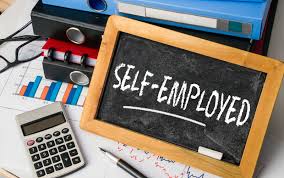Don’t let being self-employed make you think that it will be harder to get approved for a mortgage loan. Qualifying guidelines are the same for anyone applying for a mortgage whether they receive a W-2 every year or they’re self-employed. Borrowers qualify based on a minimum level of income, credit, and savings.
The main key to a self-employed borrower successfully obtaining a mortgage is income verification. In a traditional home loan, the lender will typically look at one months of pay stubs and W-2’s to determine an applicant’s income. These pay stubs show a worker’s gross income before taking out any deductions. When you’re self-employed, however, lenders don’t have W-2’s to lean on.
You generally must be in business for 2 years to qualify as a self-employed borrower. Applying as a self-employed borrower, Loan Pronto requires two years of personal tax returns as well as business tax returns. On the other hand, if you have been in business for more than five years, Fannie Mae and Freddie Mac will allow only one year of tax returns.
If you’re like most business owners, you maximize your business expenses and deductions with every tax return—which leaves you with a lower taxable income than you’d have if you were a salaried employee.
Ideally, you’ll want to prove that your income is consistent, reliable, and enough to afford your house payment.
Often-times, self-employed borrowers write off a lot of income to minimize tax exposure. So, we have a program that we can use 12 or 24 months of only bank statements rather than tax returns. This works well for borrowers who have a lot of write offs.
Be prepared to also provide documents that are equivalent to a paystub: a year-to-date Profit + Loss statement and Balance Sheet. The term ‘year-to-date’ (YTD) refers to the beginning of the calendar year that follows your last filed tax return, up to the end of the month before your application.
For example, if you apply for a loan in July, your YTD forms will cover January 1 to June 30 of the current year. They must be signed by the person that prepared them, which can be you. You don’t need an accountant or bookkeeper to prepare these forms.
The calculation to determine qualifying income is also different for self-employed borrowers. Using the tax returns, YTD Profit + Loss statements, and YTD Balance Sheets, underwriters average two years of revenue minus expenses and add back any non-cash expenses like depreciation, to calculate monthly income.
Finally, don’t forget! Mind your debt-to-income ratio.
This number is more important than many potential borrowers realize. It represents how much available cash you have so you can repay your debts month after month once you meet your other debt obligations
- Make a Larger Down Payment
- Show Proof of Substantial Savings
- Make Sure You Have Plenty of Available Credit
Your Mortgage
To calculate your monthly payment, click here for our simple mortgage calculators.
To get started with the mortgage loan process, get a free rate quote, or fill out our online loan application to get pre-approved!
No SSN required. Zero impact to credit. Your Information is never sold.
